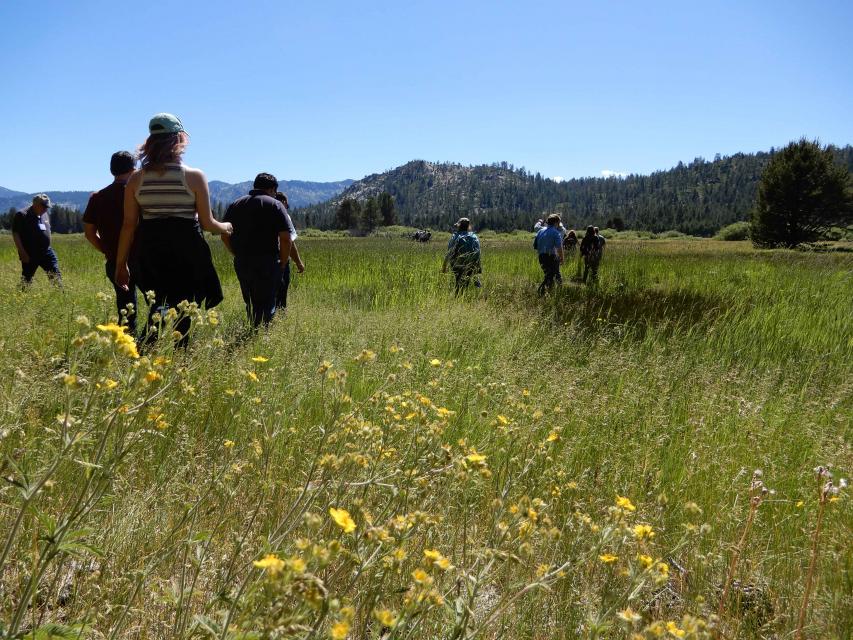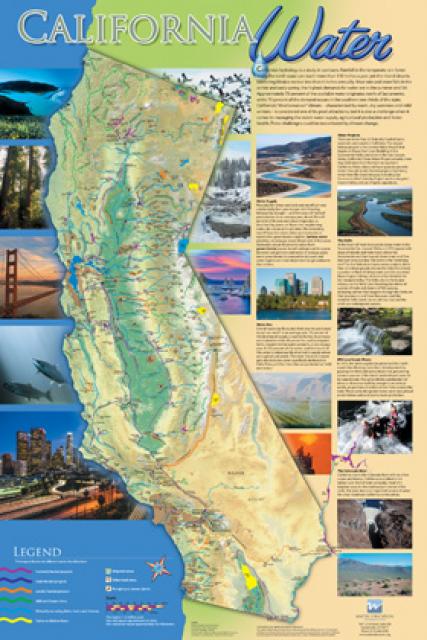Meadows
 While less a scientific term than a
colloquial one, meadows are defined by their aquatic, soil and
vegetative properties. They use surface or shallow groundwater of no more than a few
feet, with fine soil, growing predominantly herbs – or nonwoody
plants like ferns, grasses and wildflowers – but
also sometimes hosting bushes and trees. They feature a
unique and wide range of species, accounting for as much as
one-third of Yosemite National Park’s plant species while only
comprising 3 percent of its area (according to the National Park
Service).
While less a scientific term than a
colloquial one, meadows are defined by their aquatic, soil and
vegetative properties. They use surface or shallow groundwater of no more than a few
feet, with fine soil, growing predominantly herbs – or nonwoody
plants like ferns, grasses and wildflowers – but
also sometimes hosting bushes and trees. They feature a
unique and wide range of species, accounting for as much as
one-third of Yosemite National Park’s plant species while only
comprising 3 percent of its area (according to the National Park
Service).
The Sierra Nevada is home to some of the nation’s largest and most biologically rich meadows, which act like sponges to absorb and store water, mainly from snowmelt. This feature largely decreases the Sacramento Valley’s flood risk while preserving river flow in drier summer months. Sediment is naturally filtered in meadows, cleaning water for both the resident species and humans. Yosemite’s meadows have a hand in filtering most of San Francisco’s drinking water.
Formation of Meadows
Until only the last several years, it was widely believed that meadows developed from basins carved by glaciers, which eventually formed lakes that filled with sediment until a meadow evolved, ultimately populating with trees until it became a forest. Despite the elegance of this process, it has been since demonstrated, for example on the western slope of the Sierra Nevada, that many form from flat plains flanked by steep watersheds with appropriate soil and hydrologic conditions.
Types of Meadows
Meadows are characterized by a variety of criteria, most notably height and surrounding landscape. The meadows of lowest elevation, “montane meadows,” are bounded by forest. “Subalpine meadows” approach the height of the surrounding treetops, and “alpine meadows” surpass the tree line to be enveloped by rocks.
“Transitional meadows” are generally a consequence of man-made clearing of the land, in which shallow plants like herbs begin dominating since trees and other deep-rooted plants have been removed. Unless artificially maintained, a transitional meadow will be naturally replaced with the original forest. “Coastal meadows” neighbor the sea and are sometimes surrounded by mountains. These meadows primarily use sea spray for water, and are thus inhabited by only very salt-tolerant plants. “Agricultural meadows” refer to farmlands and pastures, nurturing human-reared crops, differentiated from transitional meadows only by the nonnative nature of the growing plants.
A single meadow frequently has varying moisture throughout. “Fens” are the wettest regions, decaying plants to produce peat soil. Consistently dry areas host xeric, or drought-tolerant, plants. Moist expanses generally fluctuate in wetness depending on the water table, snowmelt and precipitation.
Hazards to Meadows
Mountain meadows, like in the Sierra Nevada, have especially limited soil and are particularly impacted by even small changes in water levels. Being so dependent on melted snowpack, any human action that might affect its timing and quantity put meadows at risk, as do air pollution, introduction of invasive species, infrastructure and fire regimes.
Over time, meadows have been receding, as records from the 19th century show them as being wetter and larger than they are currently. Coniferous trees – spruces, pines and firs – are becoming especially problematic as they invade meadows and disrupt their unique ecosystem and biodiversity. Climate change may also be to blame for altered groundwater levels and changes in plant life.
Damage from poor land use practices limits the ability of meadows to provide these critical functions. Some meadow streams have become gullies that quickly move water, leaving the meadows high and dry. Forest meadows experience further degradation as they lose soil and vegetation. For downstream residents and water users, this means increased winter flooding, poor water quality and a reduced amount of water available during drier times of the year.
Restoration requires accounting for the specific hydrological conditions needed for optimal meadow health, including efforts to decompact soil, alter routes of misplaced trails and remove nonnative species. It is crucial that visitors to meadows remain on designated paths, as trampling can kill plants, expose precious soil and allow for erosion.









